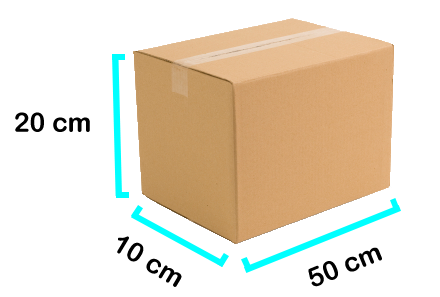'Cubic Weight' is a standard for measuring parcel size, and it's used throughout the logistics industry. Sometimes, courier and logistics companies may weigh your parcels in Cubic Weight and charge you depending on how much it 'weighs'.
Cubic Weight works like this:
- Measure your parcel in all three dimensions, in centimetres;
- Multiply the three measurements together;
- Divide that result by 4000;
- You're left with the cubic weight (in kilograms)
For example, let's say you've got a box that's 50cm long, 20cm high and 10cm wide:

50 x 20 x 10 = 10,000. 10,000 / 4,000 = 2.5
The Cubic Weight of this box is now 2.5 kilograms.
The term for the actual weight of a parcel is called the 'Dead Weight'. The actual weight of a parcel may be different to the Cubic Weight.
Regardless of whether the above box was filled with stones or feathers, it would still be considered to have the same Cubic Weight in both cases, even though its actual weight would drastically vary.
 Help Center
Help Center